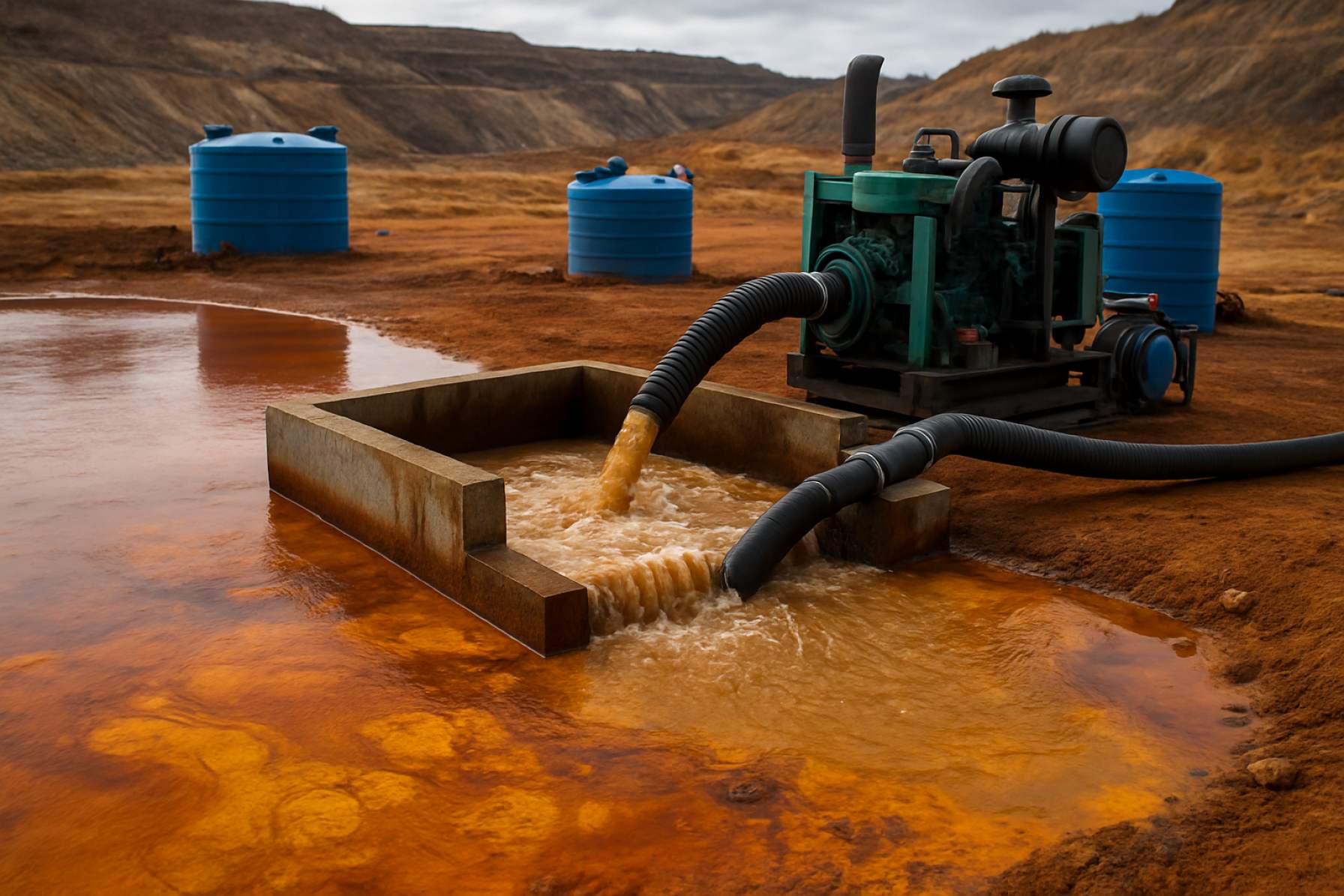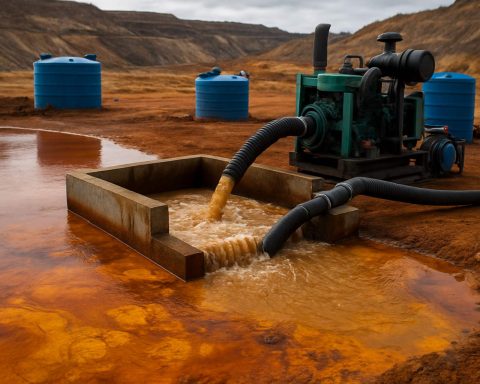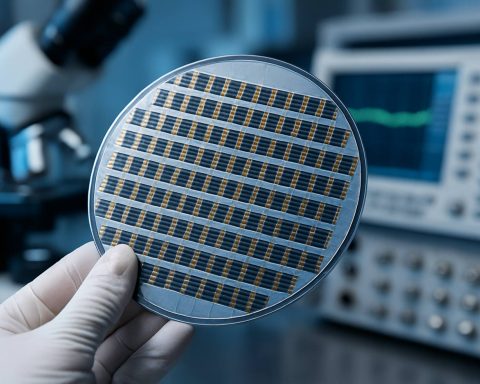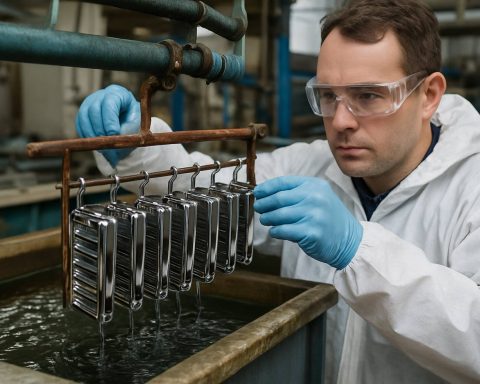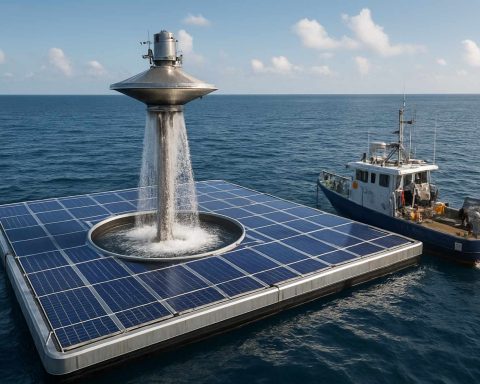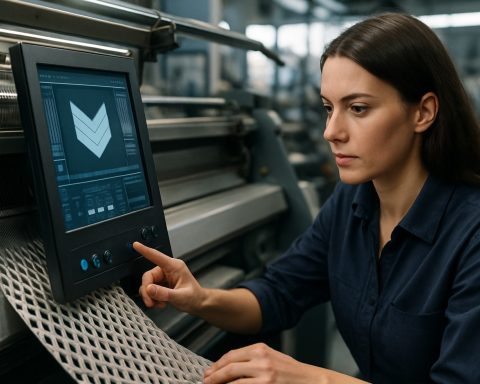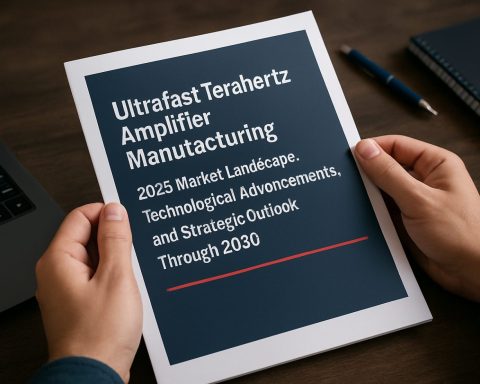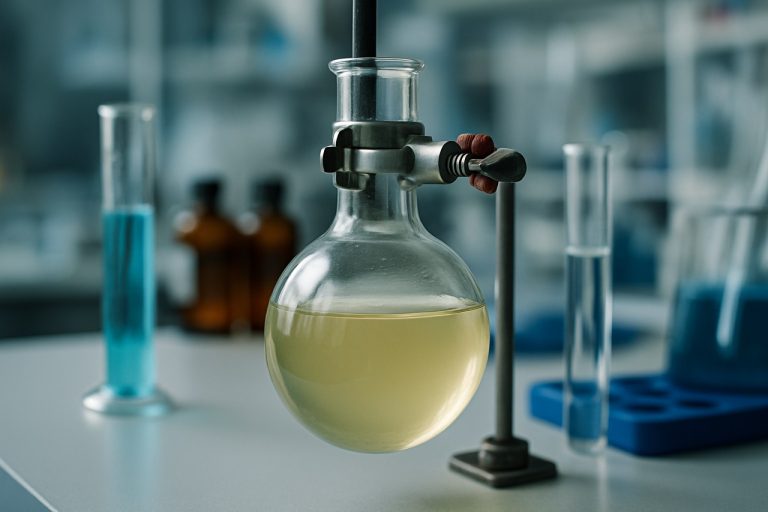Transforming Acidic Mine Drainage Remediation in 2025: Innovative Technologies, Market Expansion, and a Sustainable Future. Explore How Next-Gen Solutions Are Shaping the Industry’s Trajectory.
- Executive Summary: 2025 Market Overview and Key Insights
- Market Size, Growth Forecasts, and Regional Trends (2025–2030)
- Regulatory Landscape and Environmental Standards
- Emerging Remediation Technologies: Passive vs. Active Systems
- Innovations in Biological and Chemical Treatment Methods
- Key Industry Players and Strategic Partnerships
- Case Studies: Successful Remediation Projects (2023–2025)
- Investment Trends and Funding Opportunities
- Challenges, Risks, and Barriers to Adoption
- Future Outlook: Sustainability, Circular Economy, and Next-Gen Solutions
- Sources & References
Executive Summary: 2025 Market Overview and Key Insights
The global market for Acidic Mine Drainage (AMD) remediation technologies is experiencing significant momentum in 2025, driven by tightening environmental regulations, increased mining activity, and growing public awareness of water quality issues. AMD, characterized by the outflow of acidic water from mining sites, poses severe environmental and health risks, necessitating robust remediation solutions. The sector is witnessing a shift from traditional passive treatment systems toward advanced active and hybrid technologies, with a focus on sustainability, cost-effectiveness, and regulatory compliance.
Key players in the market include established water treatment and mining technology companies such as Veolia, SUEZ, and Xylem, all of which have expanded their portfolios to address AMD challenges. Veolia continues to deploy its proprietary Actiflo® and Multiform™ processes for high-rate clarification and metal removal, while SUEZ leverages its advanced membrane filtration and ion exchange technologies for selective contaminant extraction. Xylem is actively involved in modular treatment systems, offering scalable solutions for both large-scale and remote mining operations.
Recent years have seen increased adoption of active treatment methods, such as high-density sludge (HDS) processes, lime neutralization, and advanced oxidation, which offer rapid and reliable contaminant removal. Simultaneously, passive systems—such as constructed wetlands and bioreactors—are being optimized for lower operational costs and reduced maintenance, particularly in legacy mine sites. Companies like Veolia and SUEZ are also investing in digital monitoring and automation to enhance process efficiency and regulatory reporting.
In 2025, regulatory frameworks in North America, Europe, and Australia are expected to further tighten discharge limits for heavy metals and sulfates, compelling mining operators to upgrade or retrofit existing treatment infrastructure. The European Union’s Water Framework Directive and the U.S. Environmental Protection Agency’s Clean Water Act are particularly influential, driving demand for innovative remediation technologies.
Looking ahead, the AMD remediation market is projected to grow steadily over the next few years, with increased collaboration between mining companies, technology providers, and government agencies. The integration of circular economy principles—such as metal recovery and water reuse—is emerging as a key trend, with companies like Veolia and SUEZ piloting resource recovery initiatives. As the sector evolves, the focus will remain on scalable, sustainable, and compliant solutions to address the persistent challenge of acidic mine drainage worldwide.
Market Size, Growth Forecasts, and Regional Trends (2025–2030)
The global market for Acidic Mine Drainage (AMD) remediation technologies is poised for significant growth between 2025 and 2030, driven by tightening environmental regulations, increased mining activity, and heightened awareness of water quality issues. The demand for both active and passive treatment solutions is expanding, with particular emphasis on sustainable and cost-effective technologies.
North America remains a leading region in AMD remediation, propelled by stringent regulatory frameworks such as the U.S. Clean Water Act and ongoing legacy mine reclamation projects. Major companies like Veolia and SUEZ are actively involved in deploying advanced water treatment systems, including high-density sludge (HDS) processes and membrane filtration, across mining sites in the United States and Canada. These firms are also investing in research to improve the efficiency and reduce the operational costs of AMD treatment.
In Europe, the market is supported by the European Union’s Water Framework Directive, which mandates strict discharge limits for mining effluents. Countries such as Germany, Sweden, and Poland are investing in both active chemical treatment and passive systems like constructed wetlands. Companies such as Arkema are supplying specialty chemicals for neutralization and metal precipitation, while engineering firms are developing modular treatment units tailored for remote or abandoned sites.
Asia-Pacific is expected to witness the fastest growth in AMD remediation technologies through 2030, particularly in China, Australia, and India, where mining output is high and environmental enforcement is intensifying. Australian firms like Orica are expanding their portfolios to include water treatment reagents and on-site remediation services. In China, state-owned enterprises are collaborating with international technology providers to retrofit existing mines with modern AMD treatment infrastructure.
The market is also seeing a shift toward integrated and circular solutions, such as metal recovery from AMD streams, which can offset treatment costs and reduce waste. Companies like Metso Outotec are developing systems that combine water purification with resource recovery, targeting both operational and legacy mine sites.
Looking ahead, the AMD remediation sector is expected to grow at a robust pace, with regional trends shaped by regulatory developments, mining industry dynamics, and technological innovation. The adoption of digital monitoring and automation is anticipated to further enhance treatment efficiency and compliance, positioning leading technology providers for continued expansion through 2030.
Regulatory Landscape and Environmental Standards
The regulatory landscape for Acidic Mine Drainage (AMD) remediation technologies in 2025 is shaped by increasingly stringent environmental standards and evolving policy frameworks across major mining jurisdictions. Governments and regulatory bodies are intensifying oversight to address the persistent environmental and public health risks posed by AMD, which results from the oxidation of sulfide minerals exposed during mining activities. The focus is on both legacy sites and ongoing operations, with a growing emphasis on sustainable remediation and long-term water quality management.
In the United States, the U.S. Environmental Protection Agency (EPA) enforces the Clean Water Act (CWA), which mandates strict discharge limits for pollutants, including heavy metals and acidity from mine sites. The EPA’s National Pollutant Discharge Elimination System (NPDES) permits require mining companies to implement best available technologies (BAT) for AMD treatment, such as active lime neutralization, constructed wetlands, and advanced membrane filtration. Recent updates to the CWA guidelines reflect a push for more robust monitoring and reporting, as well as adaptive management strategies to address site-specific challenges.
In Canada, the Government of Canada enforces the Metal and Diamond Mining Effluent Regulations (MDMER) under the Fisheries Act, which set maximum authorized concentrations for contaminants commonly found in AMD. The 2021 amendments to MDMER, which remain in force in 2025, require enhanced effluent characterization and the implementation of site-specific environmental effects monitoring. Canadian provinces, such as British Columbia and Ontario, have also introduced additional requirements for mine closure plans and financial assurance to ensure long-term AMD management.
The European Union’s European Union Mining Waste Directive (Directive 2006/21/EC) continues to drive the adoption of advanced AMD remediation technologies by mandating risk assessments, water management plans, and the use of best available techniques (BAT) for waste facilities. The EU’s Green Deal and Zero Pollution Action Plan are expected to further tighten standards, with a focus on circular economy principles and the recovery of metals from AMD treatment residues.
Globally, mining companies are responding to these regulatory pressures by investing in innovative remediation solutions. Industry leaders such as Hatch and Golder Associates are actively developing and deploying integrated AMD treatment systems, including passive bioreactors, sulfate-reducing bacteria, and real-time water quality monitoring platforms. These technologies are designed to meet or exceed regulatory requirements while minimizing operational costs and environmental footprints.
Looking ahead, the regulatory outlook for AMD remediation technologies is expected to become even more rigorous, with increased transparency, stakeholder engagement, and alignment with global sustainability goals. Mining companies will need to demonstrate not only compliance but also proactive stewardship of water resources, driving further innovation and collaboration across the sector.
Emerging Remediation Technologies: Passive vs. Active Systems
Acidic mine drainage (AMD) remains a persistent environmental challenge for the mining sector, with remediation technologies evolving rapidly as regulatory and sustainability pressures intensify in 2025. The two principal approaches—passive and active treatment systems—are seeing significant innovation, with deployment decisions increasingly driven by site-specific factors, operational costs, and long-term stewardship requirements.
Passive remediation systems utilize natural processes to neutralize acidity and remove metals, often relying on constructed wetlands, anoxic limestone drains, or permeable reactive barriers. These systems are favored for their low operational costs and minimal energy requirements, making them attractive for remote or abandoned sites. In 2025, companies such as Hatch Ltd. and Golder Associates are advancing the design and monitoring of passive systems, integrating real-time water quality sensors and adaptive management protocols to improve reliability and performance. Recent field trials in North America and Australia have demonstrated that modern passive systems can achieve metal removal efficiencies exceeding 90% for iron and aluminum, with operational lifespans extending beyond 20 years under optimal conditions.
However, passive systems are not universally applicable. High flow rates, extreme acidity, or elevated contaminant loads often necessitate active treatment technologies. These systems typically involve chemical dosing (e.g., lime neutralization), aeration, and mechanical separation processes. In 2025, the focus is on automation, reagent optimization, and sludge minimization. Veolia and SUEZ are among the global leaders providing modular active treatment plants, with recent deployments in South America and Africa demonstrating rapid installation and remote operation capabilities. Data from these installations indicate that active systems can consistently reduce acidity and metal concentrations to below regulatory thresholds, albeit with higher energy and maintenance demands.
Emerging hybrid approaches are also gaining traction, combining passive and active elements to balance cost and performance. For example, Hatch Ltd. has piloted systems where passive pre-treatment reduces contaminant loads before active polishing, significantly lowering chemical consumption and sludge generation. The outlook for 2025 and beyond suggests increased adoption of such integrated solutions, particularly as digital monitoring and process control technologies mature.
- Passive systems: Low cost, long-term, best for low-flow/low-load sites.
- Active systems: High efficiency, flexible, suited for complex/high-load scenarios.
- Hybrid systems: Optimized for both cost and performance, leveraging digital tools.
As regulatory frameworks tighten and mine closure liabilities grow, the demand for robust, adaptive AMD remediation technologies is expected to accelerate. Industry leaders are investing in R&D and digitalization to ensure that both passive and active systems can meet the evolving needs of the sector through 2025 and the coming years.
Innovations in Biological and Chemical Treatment Methods
In 2025, the remediation of Acidic Mine Drainage (AMD) continues to be a critical environmental challenge, driving innovation in both biological and chemical treatment methods. AMD, characterized by low pH and high concentrations of dissolved metals, poses significant risks to water resources near mining operations. Recent years have seen a surge in the deployment and refinement of advanced treatment technologies, with a focus on sustainability, cost-effectiveness, and scalability.
Biological treatment methods, particularly those leveraging sulfate-reducing bacteria (SRB), are gaining traction due to their ability to neutralize acidity and precipitate metals as sulfides. Engineered bioreactors, such as passive treatment wetlands and active bioreactors, are being implemented at larger scales. Companies like Veolia are advancing modular bioreactor systems that optimize microbial activity and reduce operational costs. These systems are increasingly integrated with real-time monitoring and automation, enhancing their reliability and adaptability to variable AMD flows.
In parallel, chemical treatment remains a mainstay for AMD remediation, with ongoing improvements in reagent efficiency and process integration. The use of alkaline reagents—such as lime, limestone, and caustic soda—continues to be widespread, but innovations are focusing on reducing sludge generation and improving metal recovery. SUEZ and Evoqua Water Technologies are notable for their development of high-rate clarification and advanced precipitation systems, which enable more efficient removal of dissolved metals and minimize secondary waste.
Hybrid approaches that combine biological and chemical processes are also emerging. For example, staged treatment trains may use chemical neutralization as a primary step, followed by biological polishing to further reduce metal concentrations and sulfate levels. This integrated strategy is being piloted at several mine sites, with early data indicating improved treatment outcomes and lower lifecycle costs.
Looking ahead, the outlook for AMD remediation technologies is shaped by increasing regulatory pressure and the mining sector’s commitment to environmental stewardship. The adoption of digital tools—such as remote sensing, process automation, and data analytics—is expected to further optimize treatment performance and reduce operational risks. Industry leaders like Veolia and SUEZ are investing in R&D to enhance the resilience and sustainability of their solutions, positioning biological and chemical innovations at the forefront of AMD management through 2025 and beyond.
Key Industry Players and Strategic Partnerships
The landscape of acidic mine drainage (AMD) remediation technologies in 2025 is shaped by a combination of established industry leaders, innovative technology providers, and strategic partnerships aimed at scaling up sustainable solutions. As environmental regulations tighten and mining operations expand globally, the demand for effective AMD treatment continues to rise, prompting both established and emerging players to invest in advanced remediation methods.
Among the most prominent companies in the sector is Veolia, a global leader in water and wastewater treatment. Veolia’s portfolio includes advanced chemical and biological treatment systems specifically designed for AMD, such as high-density sludge (HDS) processes and membrane filtration technologies. The company has recently expanded its partnerships with mining firms in North America and Australia, focusing on modular, scalable treatment plants that can be rapidly deployed at remote sites.
Another key player is SUEZ, which offers integrated water management solutions, including passive and active AMD treatment systems. SUEZ has been at the forefront of developing constructed wetlands and bioreactor technologies, collaborating with mining companies to implement nature-based solutions that reduce operational costs and environmental impact. In 2024 and 2025, SUEZ has announced several joint ventures with mining operators in South America, targeting legacy mine sites with persistent AMD issues.
In North America, Evoqua Water Technologies has strengthened its position through the deployment of advanced ion exchange and reverse osmosis systems for AMD remediation. Evoqua’s strategic alliances with engineering firms and mining consortia have enabled the company to deliver turnkey solutions, particularly in regions with stringent discharge regulations. The company’s focus on digital monitoring and automation has also set new standards for operational efficiency in AMD treatment.
Emerging technology providers are also making significant inroads. GEA Group is leveraging its expertise in separation and filtration to develop modular AMD treatment units, while Xylem is advancing smart water management platforms that integrate real-time data analytics for optimized remediation performance. Both companies have entered into research collaborations with universities and mining companies to pilot next-generation treatment technologies.
Looking ahead, the industry is expected to see further consolidation and cross-sector partnerships, particularly as mining companies seek to align with global sustainability goals. The integration of digital technologies, circular economy principles, and nature-based solutions will likely define the next wave of innovation in AMD remediation, with leading players such as Veolia, SUEZ, Evoqua, GEA, and Xylem at the forefront of these developments.
Case Studies: Successful Remediation Projects (2023–2025)
Between 2023 and 2025, several high-profile case studies have demonstrated the effectiveness and scalability of advanced Acidic Mine Drainage (AMD) remediation technologies. These projects, spanning North America, Europe, and Australia, highlight both established and emerging solutions, with a focus on sustainability, regulatory compliance, and resource recovery.
One of the most notable projects is the ongoing remediation at the Iron Mountain Mine in California, where a combination of lime neutralization and advanced water treatment systems has been deployed. The site, managed in part by Veolia, utilizes high-density sludge (HDS) processes to treat highly acidic effluent, achieving metal removal rates exceeding 99%. The project’s success has been attributed to continuous process optimization and integration of real-time monitoring, which has reduced operational costs and improved environmental outcomes.
In Europe, Anglo American has reported significant progress at its legacy coal sites in Spain and the UK. The company has implemented passive treatment systems, including constructed wetlands and anoxic limestone drains, to address AMD at remote locations. These systems, designed for minimal maintenance, have demonstrated consistent pH neutralization and heavy metal attenuation, with water quality improvements meeting or exceeding local regulatory standards. The company’s public disclosures emphasize the importance of community engagement and adaptive management in ensuring long-term project viability.
Australia’s mining sector has also seen successful deployments of AMD remediation technologies. SUEZ has partnered with several mining operators in Queensland to install modular membrane filtration units, targeting both iron and sulfate removal. These systems, which can be rapidly deployed and scaled, have enabled mines to achieve water discharge compliance even during periods of high rainfall and fluctuating AMD loads. SUEZ’s approach integrates resource recovery, with recovered metals being processed for reuse, aligning with circular economy principles.
Looking ahead to 2025 and beyond, the outlook for AMD remediation is increasingly shaped by regulatory tightening and the mining industry’s commitment to environmental stewardship. Companies such as Veolia, SUEZ, and Anglo American are investing in digitalization, automation, and hybrid treatment trains to further enhance performance and reduce lifecycle costs. The success of recent projects underscores the potential for technology transfer and adaptation in diverse geographies, setting new benchmarks for sustainable mine closure and post-mining land use.
Investment Trends and Funding Opportunities
Investment in Acidic Mine Drainage (AMD) remediation technologies is experiencing renewed momentum in 2025, driven by tightening environmental regulations, increased ESG (Environmental, Social, and Governance) scrutiny, and the mining sector’s push for sustainable operations. Governments in major mining regions, including North America, Australia, and the European Union, are expanding funding programs and incentives to accelerate the deployment of advanced AMD treatment solutions. For example, the U.S. Department of Energy and the Environmental Protection Agency have both announced new grant opportunities and pilot project funding for innovative water treatment and metal recovery technologies targeting legacy and active mine sites.
Private sector investment is also on the rise, with mining companies and technology providers forming strategic partnerships to commercialize and scale up promising remediation methods. Notably, Veolia, a global leader in water and waste management, continues to invest in modular and mobile AMD treatment systems, leveraging its expertise in chemical precipitation, membrane filtration, and biological treatment. SUEZ is similarly active, focusing on integrated water management solutions that combine AMD remediation with resource recovery, such as the extraction of critical minerals from mine effluents.
Emerging startups and technology developers are attracting venture capital and impact investment, particularly those offering cost-effective passive treatment systems (e.g., constructed wetlands, bioreactors) and selective metal recovery processes. For instance, BASF is advancing ion exchange and adsorptive media technologies, while Evoqua Water Technologies (now part of Xylem) is expanding its portfolio of electrochemical and advanced oxidation solutions for AMD.
On the public funding side, the European Union’s Horizon Europe program and Australia’s Cooperative Research Centres (CRC) are channeling resources into collaborative research and demonstration projects, aiming to bridge the gap between laboratory innovation and field-scale deployment. These initiatives are expected to yield new commercial opportunities for both established players and SMEs in the next few years.
Looking ahead, the outlook for AMD remediation investment remains robust through 2025 and beyond. The convergence of regulatory drivers, investor expectations, and technological advances is expected to catalyze further capital inflows, especially for solutions that enable water reuse, reduce treatment costs, and recover valuable byproducts. Companies with proven track records, such as Veolia, SUEZ, and BASF, are well positioned to benefit, while new entrants with disruptive technologies are likely to see increased funding opportunities as the sector evolves.
Challenges, Risks, and Barriers to Adoption
Acidic mine drainage (AMD) remediation technologies face a complex landscape of challenges, risks, and barriers to widespread adoption as the mining sector moves through 2025 and into the coming years. Despite advances in both passive and active treatment systems, several persistent issues continue to hinder large-scale implementation and long-term sustainability.
One of the primary challenges is the high operational and maintenance costs associated with many active treatment technologies, such as lime dosing and chemical precipitation. These systems, while effective at neutralizing acidity and removing metals, require continuous input of reagents and energy, as well as skilled personnel for monitoring and maintenance. For example, companies like Veolia and SUEZ offer advanced water treatment solutions, but the capital and operational expenditures can be prohibitive for smaller mining operations or legacy sites with limited funding.
Passive treatment systems, such as constructed wetlands and anoxic limestone drains, offer lower operational costs but are often limited by site-specific factors, including climate, land availability, and the variability of AMD flow and composition. The effectiveness of these systems can be compromised by extreme weather events, which are becoming more frequent due to climate change, leading to system overload or failure. Additionally, the long-term performance of passive systems is still under scrutiny, with concerns about substrate clogging and the need for periodic rehabilitation.
Regulatory uncertainty and evolving environmental standards present another significant barrier. Mining companies must navigate a patchwork of local, national, and international regulations, which can change rapidly in response to public pressure or new scientific findings. This uncertainty can delay investment in remediation infrastructure, as companies may be hesitant to commit to technologies that could become obsolete or non-compliant. Organizations such as the International Council on Mining and Metals are working to harmonize best practices, but regulatory fragmentation remains a challenge.
Technical risks also persist, particularly regarding the treatment of complex or highly variable AMD streams. Some sites produce drainage with high concentrations of rare or emerging contaminants, for which standard treatment technologies may be inadequate. The development and deployment of novel solutions, such as selective ion exchange or advanced membrane filtration, are ongoing but face hurdles related to scalability, cost, and reliability. Companies like Evoqua Water Technologies are actively developing such advanced systems, but widespread adoption is still in its early stages.
Finally, social and community acceptance can be a barrier, especially where remediation projects require significant land use changes or long-term stewardship commitments. Building trust and ensuring transparent communication with stakeholders is essential for the successful deployment of AMD remediation technologies in the years ahead.
Future Outlook: Sustainability, Circular Economy, and Next-Gen Solutions
The future of acidic mine drainage (AMD) remediation is increasingly shaped by sustainability imperatives, circular economy principles, and the integration of next-generation technologies. As the mining sector faces mounting regulatory and societal pressure to minimize environmental impacts, 2025 is expected to see a significant acceleration in the adoption of advanced, resource-efficient solutions.
A key trend is the shift from traditional lime-based neutralization to more sustainable and value-generating approaches. Passive treatment systems, such as constructed wetlands and bioreactors, are gaining traction for their low energy requirements and ability to harness natural processes. Companies like Hatch are actively developing and deploying passive and semi-passive AMD treatment systems, focusing on long-term operational sustainability and reduced maintenance costs. These systems are particularly attractive for remote or legacy mine sites where ongoing chemical dosing is impractical.
Resource recovery is another area of rapid innovation. Technologies that extract valuable metals—such as copper, zinc, and rare earth elements—from AMD streams are moving from pilot to commercial scale. Veolia, a global leader in water treatment, is advancing selective metal recovery processes that not only mitigate pollution but also create new revenue streams, aligning with circular economy objectives. These solutions are expected to become more prevalent as metal prices remain robust and environmental regulations tighten.
Electrochemical and membrane-based technologies are also poised for growth. Companies like SUEZ are investing in advanced filtration and ion exchange systems that offer high selectivity and lower sludge production compared to conventional methods. These next-gen systems are increasingly being integrated with digital monitoring and automation, enabling real-time optimization and predictive maintenance—key for reducing operational costs and environmental risks.
Looking ahead, the sector is likely to see greater collaboration between mining companies, technology providers, and research institutions to accelerate the commercialization of innovative AMD remediation solutions. The adoption of life cycle assessment (LCA) and sustainability reporting frameworks is expected to drive transparency and continuous improvement. Furthermore, the integration of renewable energy sources into treatment operations is anticipated to further reduce the carbon footprint of AMD management.
- Passive and semi-passive systems will expand, especially for legacy sites.
- Resource recovery from AMD will become a standard practice, supported by companies like Veolia and Hatch.
- Advanced membrane and electrochemical technologies will see increased deployment, with SUEZ as a key player.
- Digitalization and automation will enhance efficiency and sustainability.
In summary, 2025 and the following years are set to witness a paradigm shift in AMD remediation, with sustainability, circularity, and technological innovation at the forefront of industry strategies.
Sources & References
- Veolia
- SUEZ
- Arkema
- Metso Outotec
- Government of Canada
- European Union
- Hatch
- GEA Group
- Anglo American
- BASF
- International Council on Mining and Metals
